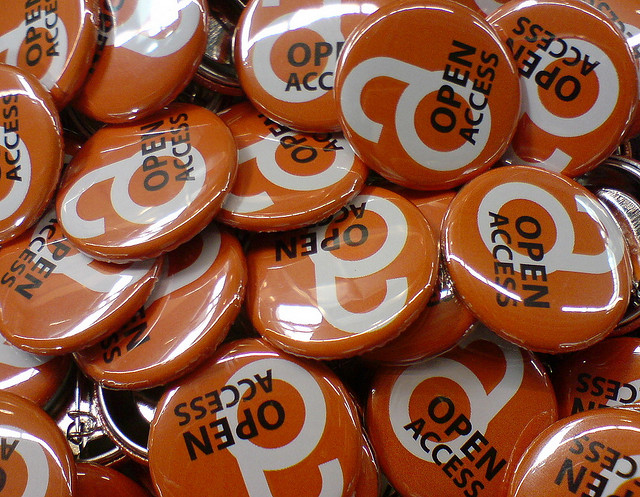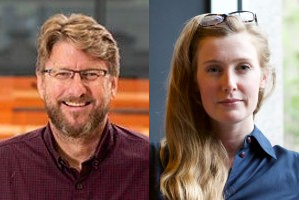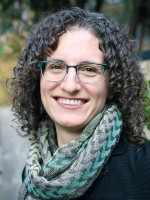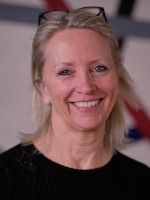Open Access in the Humanities and Social Sciences in Canada: A Conversation
Five organizations representing knowledge networks, research libraries, and publishing platforms joined the Federation of Humanities and Social Sciences to review the present and the future of open access — in policy and in practice – in Canada

Over the last decade, open access (OA) has gained support among researchers and policymakers, with increasingly vocal advocacy for free online access to scholarly work. While incorporating open access policies in Canada reflects a rapidly changing publishing landscape, with the rise of digitalization and the pressing need to broaden access, the barriers to making open access a widespread reality are many and complex.
The Federation for Humanities and Social Sciences (the Federation) recently convened a conversation about the state of open access programs and policy in Canada and the future of open access in the humanities and social sciences.
The Federation was joined by Darcy Cullen, of the digital publishing platform RavenSpace, Dr. Ray Siemens and Dr. Alyssa Arbuckle of the research network Implementing New Knowledge Environments (INKE), Canadian Research Knowledge Network (CRKN), Susan Haigh of the Canadian Association of Research Libraries (CARL), and Jessica Clark of non-profit publishing platform Érudit, to discuss questions posed by the Federation. (Bios below.)
Open access has been an area of conversation within scholarly publishing internationally throughout the last decade. Where does Canada currently stand?
Ray Siemens and Alyssa Arbuckle: Canada is certainly a part of the ongoing open-access conversation happening internationally. Beyond the policy and funding agency developments in this area, Canadian organizations and researchers are active in considering how scholarly communication could be more open, as well as more findable, accessible, interoperable, and reusable following the FAIR principles.
Canadian Research Knowledge Network: Close collaboration has been at the center of so many advances in OA in Canada, [it] is a point of pride for our many organizations in this space and continues to be a source of envy for colleagues in the international community. Much progress has been made in the last decade, whether it be from a policy standpoint (individual institutional OA policies, the Tri-Agency policy, the Roadmap for Open Science), an infrastructure standpoint (PKP, Érudit, persistent identifiers), or the openness of the research output itself (research data, journal articles). There is much work to be done, however, to ensure that the transition to open access is sustainable, driven by the academy, properly funded, and equitable for all
Jessica Clark: In some regards, Canada is a leader in open-access development, and in some regards, we have some catching up to do. I know that many international groups look upon Canada’s funding structure, for humanities and social sciences research in general, as well as for journal publishing, with envy. We have support for our OA humanities and social science (HSS) community here that a lot of other countries do not. However, are these supports currently enough to bring our community through the sort of broad-based change that we are currently seeing in Europe around Plan S or with the publicly funded OA model in Latin America? In short, no.
Susan Haigh: Canada is home to initiatives that have been key to advancing open access internationally, most notably Public Knowledge Project’s (PKP) Open Journal Systems, and we are making progress through various collaborative initiatives and funding programs. For example, Canadian research libraries have been some of the most progressive in terms of funding open infrastructures here at home and internationally, which is a prerequisite for making a full transition to open access. Although the current Tri-agency policy allows a 12-month embargo, we expect this to change given some new policies in other jurisdictions, such as Plan S (which has been endorsed by FRQ) and the Office of Science and Technology Policy Nelson memo in the US, which require immediate open access.
What has been achieved specifically within the humanities and social sciences?
Siemens and Arbuckle: One key advancement within the HSS in Canada is a shift in attitude and understanding regarding open access and open scholarship more generally. As recently as a decade ago, there was still substantial hesitation toward and misinformation about open-access publishing throughout the HSS community. Now, many more HSS researchers understand the value and importance of sharing our research more widely and of collaborating across communities to create knowledge.
Cullen: I definitely think there is growing clarity about the mandate and goals for OA within HSS. Conversations are less siloed – between administrators, scholarly authors, publishers, librarians, etc. – and are starting to take place across the different parties driving, affected by, and involved in OA and publishing.
Siemens and Arbuckle: In part, I see this shift as being informed by the Federation itself, through work they have undertaken for many years at the forefront of open access concerns in the humanities and social sciences. Among other activities, this is evinced by the establishment of INKE Partnership Director Ray Siemens as chair of the Research Dissemination Advisory Committee from 2011-13 (when he served as the Federation’s vice-president of research dissemination), as well as the movement, in partnership with the Social Sciences and Humanities Research Council, toward funding open access electronic publication.
Clark: We have many excellent Diamond Open Access journals – which charge neither subscription fees to readers nor article processing charges (APCs) to authors. We are also fortunate to have important digital infrastructures, such as the Érudit platform and Open Journal Systems (OJS) developed by the Public Knowledge Project (PKP), which facilitate and sustain open access HSS publications.
Haigh: There has been significant progress in collective funding for the Canadian humanities and social science publishing infrastructure, such as Coalition Publica, which draws together and strengthens Érudit and PKP’s OJS, providing a hosting platform and technical support for Canadian journals. Library funding along with significant government investments provide these journals with sustainable revenue streams, enabling them to transition to a non-APC model (commonly referred to as Diamond Open Access).
Clark: Canada’s research library community has also made important investments in journal hosting programs and through direct support of Open Access initiatives. Having multiple sources of support is good; however, we need to further integrate them around a long-term vision for open access in Canada that includes the unique circumstances of HSS researchers and publications, not just as an afterthought to a system developed primarily around STEM.
What barriers or challenges remain for adopting open access policies and practices, especially as they apply to HSS? To quote Hamlet, when it comes to open access today, what still makes us say, ‘there’s the rub’?

Cullen: The challenges as I see them are in the gaps or questions still unanswered by OA policies: What are the measures that will determine whether OA is meeting the goal of improving access to resources? Besides removing cost and (re)use barriers, what other mechanisms need to be in place to improve both discoverability and access by audiences outside standard channels of academia (i.e., university libraries, which tend to require an institutional affiliation), and ensure resources find their way into the broader and diverse publics?
OA so far has been a university-centric model of dissemination. How does the drive for OA reflect the publishing goals of research collaborators in community-based research and knowledge creation? Identifying the incentives, and rewards among community-based partners, in order to respond to them, would be a good action to take. What types of financial investment are needed to fund OA in HSS publishing in Canada and for what types of publications? Is OA designed for conventional publishing outputs (e-books) and also new forms of scholarship, such as born-digital outputs that are published as peer-reviewed works? To what extent do OA policies look to the future of scholarship and learning? What is the business model envisioned for HSS OA book publishing?
Haigh: A simple transition from consumer-pays models (book sales, journal subscriptions) to author-pays models is proving inadequate. Library read-and-publish agreements (so-called ‘transformative agreements’) do advance the goals of open access, but they leave article processing charges (APC) price-setting and other terms in the hands of the commercial entities. Furthermore, they do not achieve their intended aim, which was to ease the transition of those journals from a subscription-based model to full open access. To CARL members, this signals a need to strengthen the other pathways to open and to strengthen non-profit academic community control over the research dissemination ecosystem.
As part of this, new models to support the costs of production and dissemination are needed that distribute the costs across several stakeholders. Any such model needs to have a predictable, sustaining level of support. In Canada, I believe the library community, their parent universities, the funding agencies, and the government (e.g. Canadian Heritage) must discuss new, shared funding models.
Clark: Honestly, there is still not enough funds in the system to support a wholesale switch to open access for all of Canada’s HSS journals. Charging APCs is not going to work in HSS, but that leaves many journals wondering how they will balance their budgets without subscription revenue. Canada’s scholarly communications community needs to find a way to fill those gaps so that our journals can continue their operations and the high-quality of the publications they produce.
CRKN: Particularly with HSS disciplines, the models must be flexible in order to accommodate a different scholarly communications tradition from the STEM environment and must also take into account the differing needs of serials and monograph publishing. Fair assessment and evaluation of open-access research outputs during promotion and tenure processes is of critical importance to ensure widespread adoption by researchers.
Siemens and Arbuckle: We are still facing issues around tenure and promotion practices across Canadian universities, where emphasis is put on publication in prestige journals, and due to longevity and legacy publishing practices, many of those prestige journals are not yet fully open access. Luckily, some newer fields like digital humanities demonstrate a much stronger orientation toward open-access publishing and so avoid such issues.
From your perspective, what is unique about the HSS vision of open access, and how can our community and disciplines contribute to it?
Clark: The HSS has always been rooted in understanding human experience, and how that experience is influenced by complex factors. I’m thinking especially of the perspectives the HSS contribute on how people are included or excluded within different social systems – and scholarly publishing is one of those systems. What naturally follows, I think, is a vision of open access where anyone who would like to read or publish peer-reviewed research is not prevented from doing so because of economic reasons. This vision is fundamentally the democratization of knowledge, which is what Diamond Open Access provides.

Siemens & Arbuckle: How can we make our academic practice more publicly engaged? The INKE Partnership is focused on the concept of open social scholarship, which is premised on the idea that although open access is critical, open access is not enough. How can we build from open-access publishing to strengthen the research network and profile of the HSS in Canada? One of the ways we’re exploring this concept is through the Canadian Humanities and Social Sciences Commons, an in-development, bilingual research network for HSS researchers across the country. The Canadian HSS Commons does include an open-access repository, but it also facilitates open social scholarship through networking, community-building, and content management features.
Haigh: The characteristics of HSS publishing vary across disciplines and differ from the sciences. Because of this, HSS could be a leader in advocating for a non-commercial approach to open-access publishing, which would enable all researchers to publish open access without being charged APCs.
We know that cross-stakeholder collaboration is a necessary ingredient in establishing successful, meaningful open-access policies and practices. Who and where does this support come from, and how do these different groups need to be involved?
CRKN: There are many players required at different levels and times during the open access workflow, from government at the policy level, to funding agencies to provide sustainable financial support, and libraries and consortia who provide support, management, negotiations, preservation, and other critical services.
Cullen: Discussions to develop OA policies and practices, and to broaden engagement and understanding around OA, should involve publishers, as well as knowledge creators (researchers, knowledge-holders, authors) both of conventional modes and of emerging forms of knowledge production and circulation. When UBC Press surveyed authors in 2021, we found that few at the time were engaged in any meaningful way with OA; they will request OA from a publisher when it’s a requirement of a research grant but may only have a passing notion of what it means.
CRKN: Researchers and institutions must play their part by adopting systems, processes, and infrastructure that strengthen the path to OA, such as persistent identifiers (PIDs) like ORCID. Collaboration amongst all of these diverse yet interconnected stakeholders is key to the ongoing transition to open access.
Cullen: University administration, learned society directors, and tenure and promotion committees should also be part of this publishing conversation. It’s unlikely that OA will be evenly implemented initially, but it seems essential to have a general framework that is informed and understood by the different roles in the research continuum.
Haigh: Yes, collaboration is critical for moving forward. We need to coordinate policies, with funding, with infrastructure development, and so on. CARL is already participating in an informal group, which includes all the federal funding agencies and the FRQ as well as the Federation, CRKN and CARL, to discuss how we can work more closely to advance open access in Canada.

Clark: I would like to underline exceptional work being done in university libraries by scholarly communications librarians who support journals with publishing software and in implementing best practices. Their work is an excellent example of the types of support that might not be financial, but that can make a real difference to the sustainability of a journal.
Many journals in Canada have been able to establish multiple sources of support, which may appear as a patchwork, but that, if they are secure, provide a sort of continuity that can help them weather shifts in their circumstances. This patchwork of support might include federal or provincial funding programs; institutional support through course relief for editors and/or graduate student positions; scholarly society support through open access levys or other membership programs; and infrastructure support through initiatives such as Coalition Publica.
What does a future with equitable, sustainable open access policies and practices look like?
Clark: I love imagining this future – where I see Canada’s HSS journal editors supported and valued for their publishing expertise and the contributions that they are making to their disciplines and institutions, and assisted in the technical processes that underpin digital scholarly publishing today.
CRKN: An OA future means immediate, barrier-free, and equitable access to publicly funded research outputs and will continue to ensure Canada’s place at the forefront of innovative and compelling research.

Haigh: Because pay-to-publish models can exclude researchers (in Canada and internationally), we must work together in Canada and with our international colleagues to develop models for HSS research dissemination that work at the international level. If we continue to develop and enhance our Canadian not-for-profit publishing, data management, and persistent identifiers infrastructure, we will be well on our way.
Clark: I see a variety of stakeholders – policymakers, funding agencies, postsecondary institutions, research libraries, publishers, and infrastructure providers – working in coordination, each contributing as much as they are able to an open-access publishing ecosystem that is working towards the ultimate goal of Diamond Open Access.
Cullen: Multiple funders – government, private, institutional – provide support for publication, as an investment into the production of works of excellence that range from the single-authored monograph to the multimedia publication produced by a collaborative team of authors.
Siemens and Arbuckle: A future with equitable, sustainable OA policies and practices means a more efficient and more sustainable future for HSS researchers in Canada. This includes better research data management, knowledge mobilization, and publishing standards and supports.
Clark: And, perhaps most importantly, I see Canadians, as well as people from around the world, accessing, reading, and benefitting from the rich diversity of Canadian HSS research.
Siemens and Arbuckle: Beyond more pragmatic matters, an OA future for HSS means a more community-engaged future.
Cullen: Yes, in this future, the published fruits of research are easily found and accessed both within academic institutions and outside of it, by diverse publics.
Siemens & Arbuckle: We often ask ourselves why there is waning support for postsecondary institutions and a rising culture of anti-intellectualism. Perhaps part of the answer is that we are not sharing our publicly funded research publicly. It is difficult to garner support for a discipline if that discipline is cloistered from the wider world.
How do we achieve this vision of the future? What does it look like in practice?
Cullen: For specific OA goals to be adopted and sustained, we need a working definition of OA and clear measures of success – i.e., what determines whether an OA policy is working? – that multiple stakeholders agree upon.
Clark: All stakeholders need to listen attentively to each other’s needs and challenges, as well as their objectives, and reflect on what we can learn from each other, as well as other experiences around the globe. Decision-makers at all levels need to understand the sorts of pressures that publishers face in an open-access environment and take those seriously as they prepare policies and programs, and the budgets that will support them. Institutions and libraries need to invest in new directions that are in line with their support for open access.
Publishers should explore with all these stakeholders new ways of receiving support. The challenge is for each stakeholder to understand what they can contribute and how that helps them reach their own objectives around open access – and then to make an investment that’s commensurate with those objectives.
Cullen: At RavenSpace, we are adapting open access so that we can deliver Indigenous community-driven publications of the highest standard in an online format. Not limited to the e-book format but instead publishing with formats that are produced in Indigenous community-university partnerships – oral histories, language videos, text, visual narratives, performance, interactive mapping, etc. – we are combining OA with Indigenous protocols.
CRKN: CRKN pursues multiple pathways to enable an OA future in which researchers are able to publish open access, at no cost to them, in the journals of their choice, while libraries and universities can draw on sustainable financial sources to fund the transition in a responsible, transparent, and efficient way. In addition, there should be ample support for OA monographs, and new and alternative forms of digital publishing and research dissemination. This will ensure a vibrant and competitive Canadian OA ecosystem.
Cullen: We are aiming for more direct engagement with audiences and to reach multiple types of audiences: scholars; Indigenous communities and organizations; educators and students. We value the conventional channels of distribution for academic publishing but we recognize their limitations for OA products and for the discovery, access, and interaction of dynamic online formats.
Haigh: Key to achieving the vision is reforming research assessment. This means researchers are not evaluated on the venue in which they publish, but on the quality of the article. Then researchers will feel they have the liberty to publish where is most convenient for them. There are initiatives that are pointing the way, such CoARA and DORA.
What are our lessons learned at this point in the process?
Cullen: We need flexibility in OA policies to respond to distinct, Indigenous conceptualizations of access, collective benefit, use, and control of cultural knowledge. We need to develop channels of distribution and support as well as methods of audience engagement that are tailored for OA publishing. That will take time, and require industry expertise to ensure real-world, sustainable solutions.

CRKN: While CRKN continues to leverage the collective negotiating power of our member libraries with commercial publishers, we are currently unable to harness and pool the additional revenue streams those publishers receive from authors and institutions (i.e., article publication charges, or APCs). As long as APCs paid by authors aren’t consistently and accurately tracked, negotiations for fully OA agreements with commercial publishers are disadvantaged. Researchers, libraries, funding agencies, and institutions must collaborate together to combine these disparate funding streams to improve the sustainability of OA publishing.
Clark: Our work with PKP, our partner in Coalition Publica, as well as the stakeholders we’ve been able to convene through that initiative, has taught us what an ecosystem approach to open access – including practical publisher supports as well as coordination with the community – can produce. In a relatively brief period of time, we’ve brought together many Canadian HSS journals, library publishers, and stakeholder organizations to put in place digital publishing infrastructure, services and financial support that makes Diamond Open Access achievable and sustainable for a wide variety of journals.
Haigh: This is a complex area, and there is no single ‘right’ approach. We have learned the importance of working together across the research ecosystem based on our common aims: timely, equitable, enduring, sustainable global access to research outputs. We have certainly witnessed the power of policy to advance funding alignment and increase commitment to open, but at this point, we are influenced by the emergence of policies in other jurisdictions, such as Plan S and the OSTP memo. It is vital that Canada keep in step.
What our contributors’ organizations are doing in the area of open access and HSS
At RavenSpace, we are publishing Indigenous community-driven, multimedia, online publications. We are taking the principles of open access – of removing the barriers to accessing academically and community peer-reviewed works – and adapting them for knowledge sharing that includes cultural heritage and Indigenous intellectual property. We are striving for the balance between public access to knowledge and Indigenous rights to determine how their knowledge is accessed and used.
The INKE Partnership is committed to publishing all our research output openly, whether that’s in open-access journals, institutional repositories, or in shared, public knowledge spaces like Wikipedia. Currently, we’re working on an open knowledge mobilization initiative called the Open Scholarship Press. Through the Open Scholarship Press we have published four open-access annotated bibliographies in INKE’s core research areas on Wikibooks and PubPub, and we’re also setting up print-on-demand options for these online collections. The next phase of this initiative will be to publish curated collections of reprinted, open-access materials directly pertaining to INKE’s research and also available in multiple open venues.
Another current initiative is the Open Scholarship Policy Observatory, which provides a snapshot of open scholarship happenings at the policy and organizational level in Canada and around the world.

One of our key initiatives is the Partnership for Open Access (POA), first established in 2014 between Érudit and the Canadian Research Knowledge Network, which was specifically designed to support non-APC/Diamond OA. The POA’s first major achievement was to permit Érudit to reduce the moving wall for the scholarly journals on its platform from 24 months to 12 months, in alignment with federal OA policy, while ensuring journal sustainability. The POA continues to allow us to distribute over $700,000 annually in financial support to Canadian scholarly journals. We’re proud that we can offer this support not only to the journals that maintain a 12-month moving wall but also to the journals that have embraced Diamond OA.
CARL and its member research libraries have provided thought leadership and significant financial support over many years to a wide range of open access/open science initiatives. Recently, CARL and CRKN have articulated a joint action plan to guide our respective and collective efforts in advancing open science. The plan recognizes and seeks to strengthen the various pathways to open access. In other words, we see value in strengthening repositories for articles and data deposit (Green OA), collective publishing platforms and library-based publishing (Diamond OA), and – for now, transitionally – licensing under transformative agreements (Gold OA).
CRKN has been active primarily in the area of unlocking scholarly communications outputs that were previously behind publisher paywalls. In particular, through our Partnership for Open Access with Érudit, our members have supported a unique model for transitioning HSS journals from subscription to open access (Coalition Publica).
On the commercial publishing side, CRKN has recently negotiated read and publish agreements with major global publishers, resulting in the unlocking of Canadian research for global readers in journals from Wiley, Cambridge University Press, and Sage (including many from HSS disciplines). These agreements are cost-neutral for libraries and provide OA publishing options for Canadian authors at no cost. We estimate that over 6,000 articles per year will be published with an open access license from these three agreements alone, the vast majority of which would have otherwise been published as subscription articles.
Thanks to the financial support of our members, CRKN has also removed the paywall to access Canadian cultural content on the Canadiana platform, enabling transformative research on, and engagement with, the diverse stories of Canada’s past.
Participants

Darcy Cullen for RavenSpace
Darcy Cullen is assistant director, acquisitions, at the University of British Columbia Press (UBC Press) and the founder of RavenSpace. RavenSpace, a division of UBC Press, combines a unique platform, a suite of services, and a team of passionate professionals to publish trusted digital resources by Indigenous knowledge-holders and their research collaborators.

Canadian Research Knowledge Network
CRKN advances interconnected, sustainable access to the world’s research and to Canada’s documentary heritage content. We represent 84 member institutions across Canada, including world-class academic libraries and research institutions, two national libraries, and Canada’s largest public library system.

Susan Haigh for Canadian Association of Research Libraries
Susan Haigh is executive director of the Canadian Association of Research Libraries. Founded in 1976, CARL provides leadership to enhance its 31 member libraries’ capacity to advance research and higher education, including many initiatives that aim to promote more effective, sustainable, and open knowledge creation, dissemination, and preservation.

Jessica Clark on behalf of Érudit
Jessica Clark is senior coordinator, open access development at Érudit. An experienced scholarly publisher, she has previously worked at Coalition Publica, the Awards to Scholarly Publications Program (ASPP) and the University of Ottawa Press. Érudit is a Canadian inter-university consortium whose mission is to support open digital publishing and research in the humanities and social sciences.
Ray Siemens and Alyssa Arbuckle on behalf of INKE

Dr. Ray Siemens is a distinguished professor in the Faculty of Humanities at the University of Victoria, where he directs the Electronic Textual Cultures Lab, the Implementing New Knowledge Environments Partnership, and the Digital Humanities Summer Institute.
Dr. Alyssa Arbuckle is the co-director of the Electronic Textual Cultures Lab at the University of Victoria, where she is operational lead for the Implementing New Knowledge Environments Partnership and a co-facilitator of its Connection cluster.
The Implementing New Knowledge Environments (INKE) Partnership is a North American-based research network with the goal of fostering open social scholarship: academic practice that enables the creation, sharing, and engagement of open research by specialists and non-specialists in accessible and significant ways.




























































































